Arctic Char Case Study
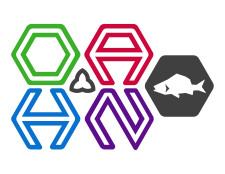
Dr. Marcia Chiasson (University of Guelph)
Dr. Alexandra Reid (Ontario Ministry of Agriculture, Food, and Rural Affairs)
Arctic char (Salvelinus alpinus) at Ontario Aquaculture Research Centre (OARC) were observed to have increased total suspended solids in outdoor production tanks. Increased concerns with total suspended solids (TTS) were noted starting in September 2023 and were initially chalked up to maintenance issues. Despite daily cleaning, TTS continued to be a challenge. During health monitoring observations, it was noted that the fish appeared to have diarrhea, where the feces were being expelled as fines rather than as a solid string. Unlike normal feces, the fines do not settle to the bottom of the tank where they can be discharged down the drain. Because the fecal fines are not removed from the tank, they are often resuspended in the water column when the fish are active (e.g. feeding). While initially dietary changes were suspected, Arctic char from the same originating population but held indoors for future broodstock remained clinically unaffected and therefore, a parasite was suspected.
Fish were culled on November 28, 2023 for an internal exam and fecal smear. The gut of the affected fish was overloaded with feed pellets and the intestines were full of liquid feces. Fish also had mild abdominal distension. Congestion and patchy hemorrhage was noted over the intestinal tract and pyloric cecae. Fecal smears, gill clips and skin wet mounts were within normal limits and no protozoa were identified. Samples were collected and submitted through diagnostic service at the Animal Health Laboratory, University of Guelph, Guelph ON.
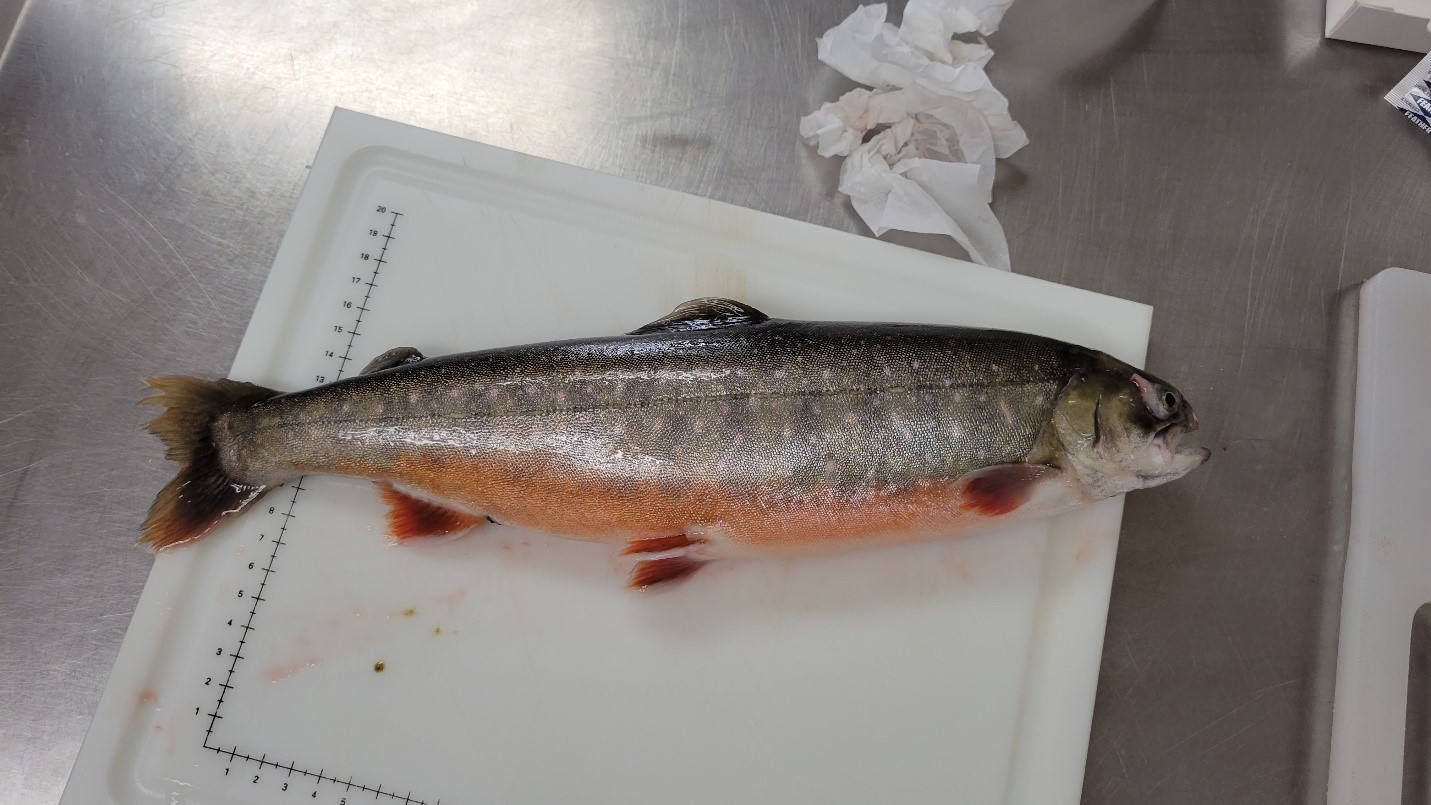
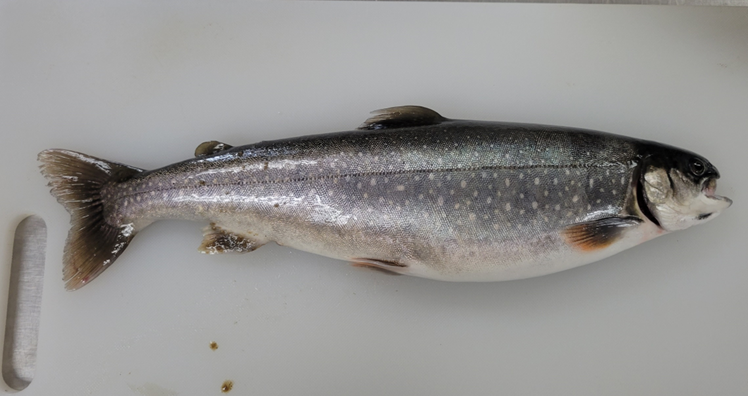
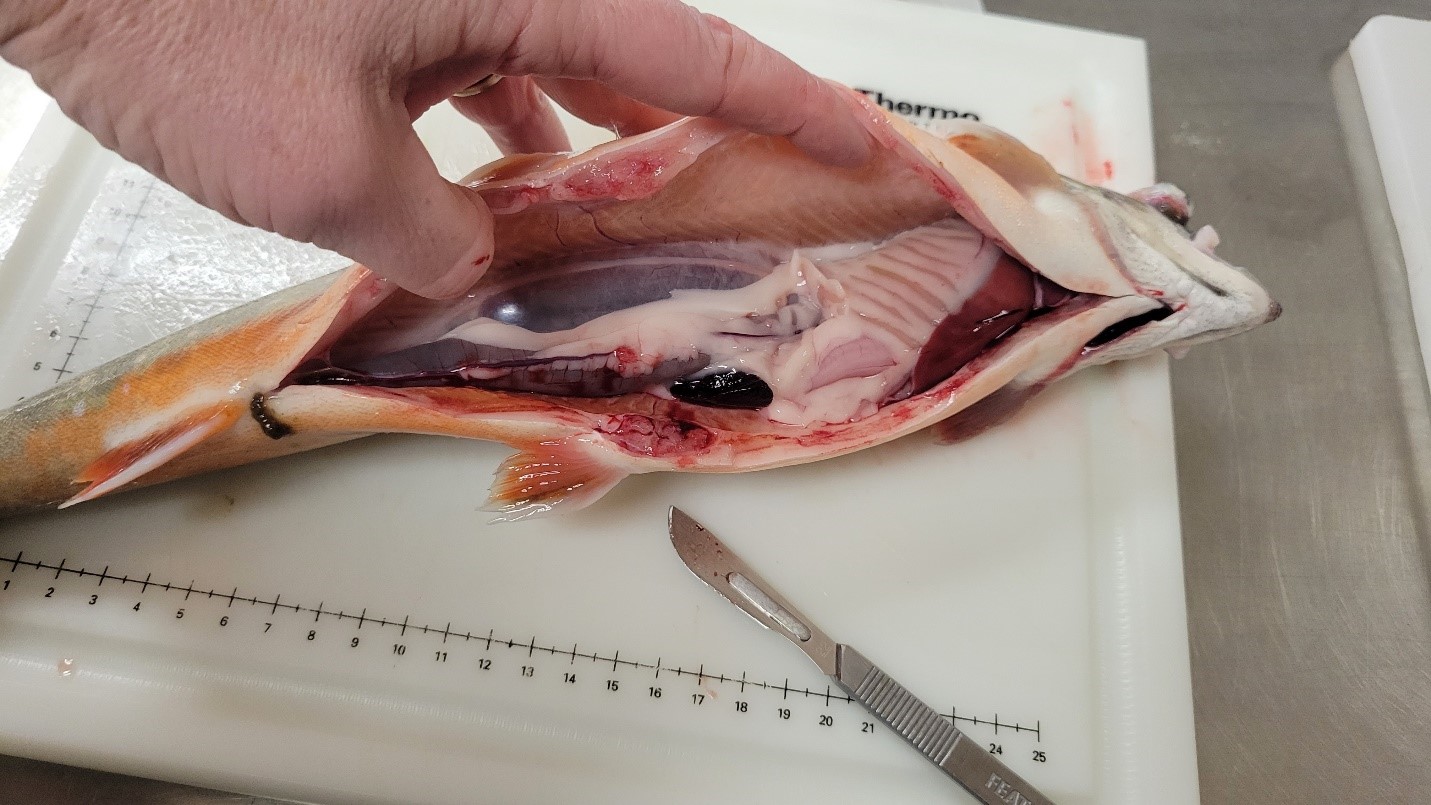
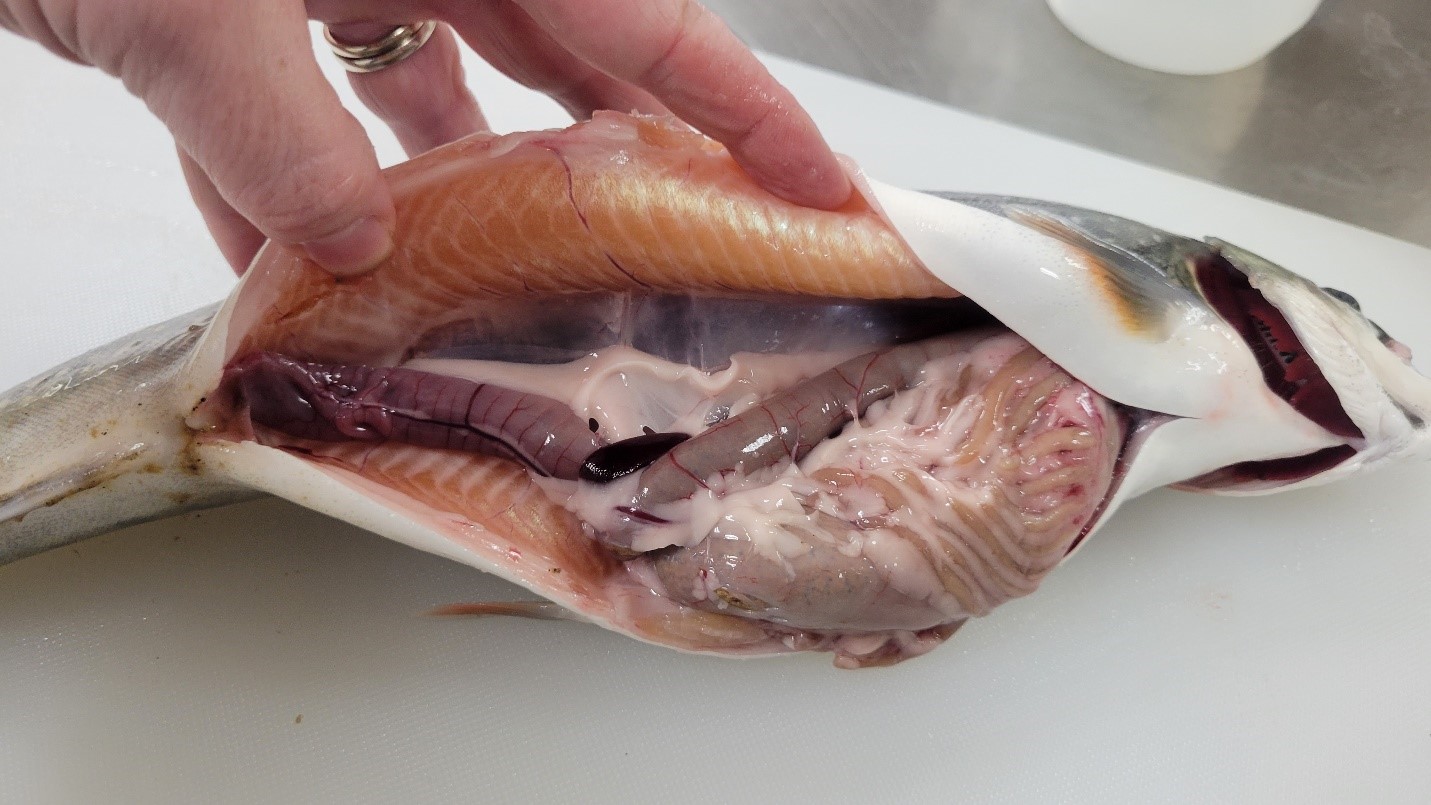
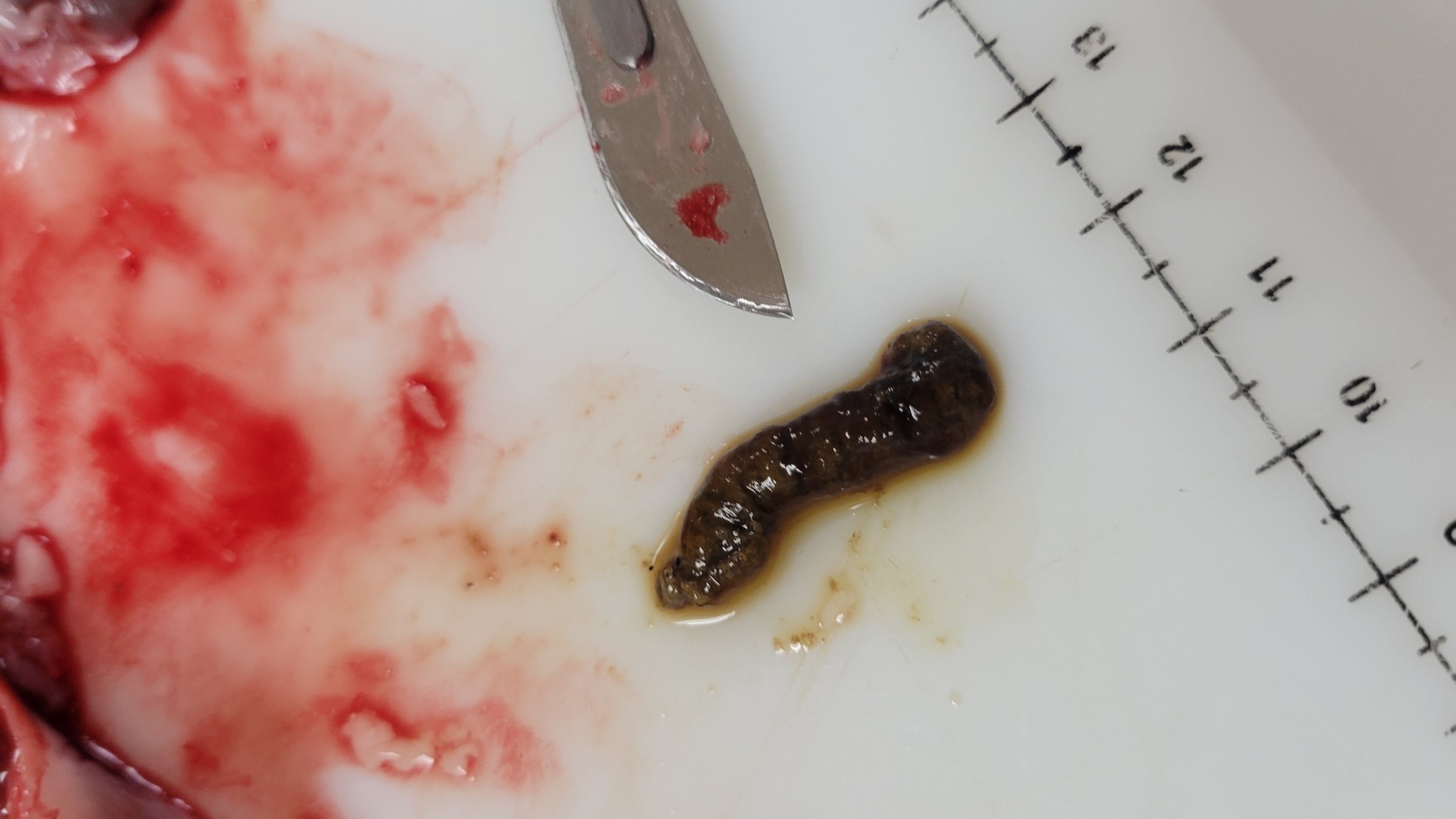
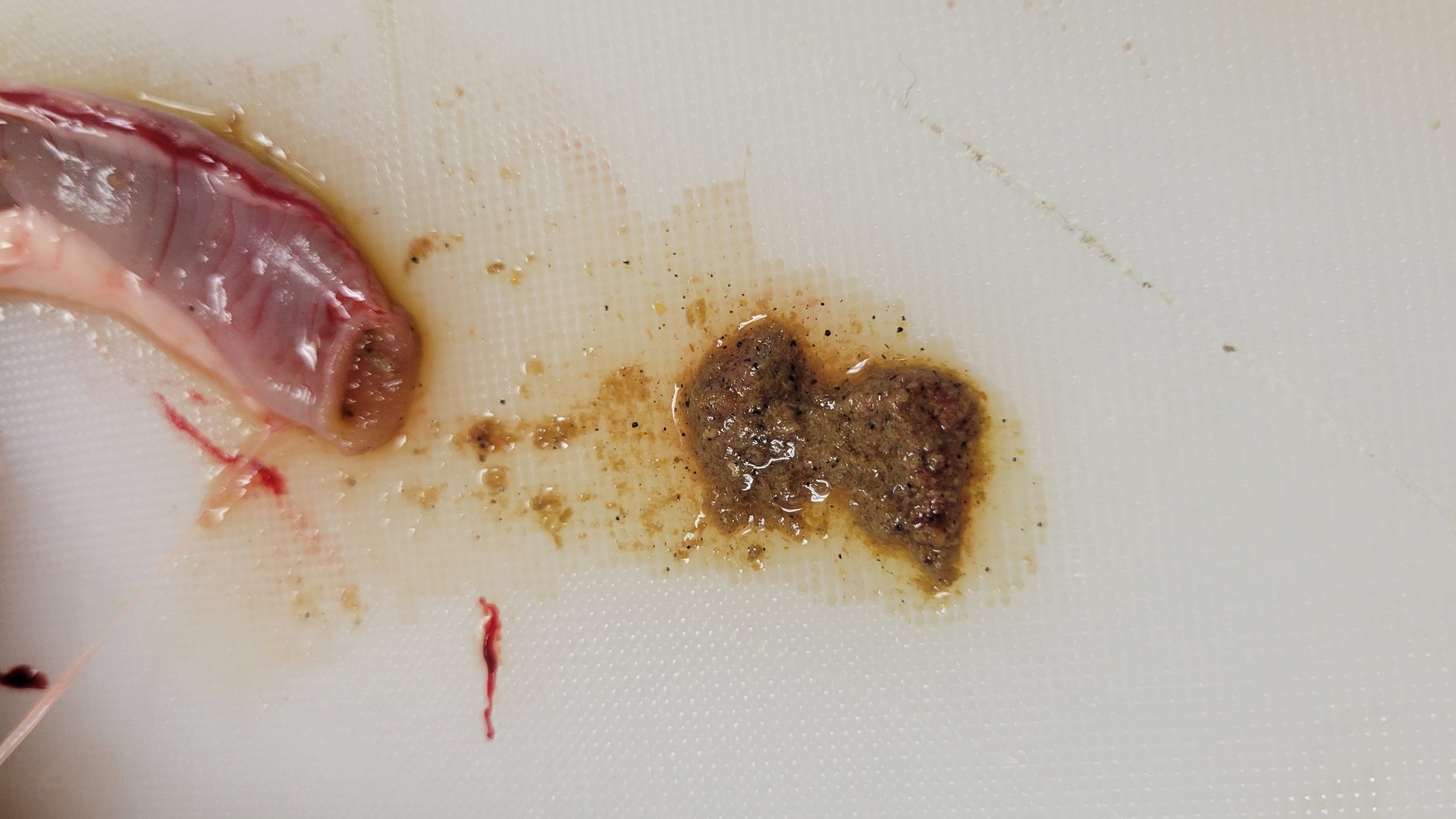
Wet mounts of clinically affected and unaffected char are within normal limits.
On histopathology, flagellated protozoa consistent with Spironucleus spp. (formerly Hexamita) were identified. Protozoa are visible in the intestine photo below in the circle and at the arrow. While it was not speciated, char have been reported to be susceptible to infection by S. bakhanus.
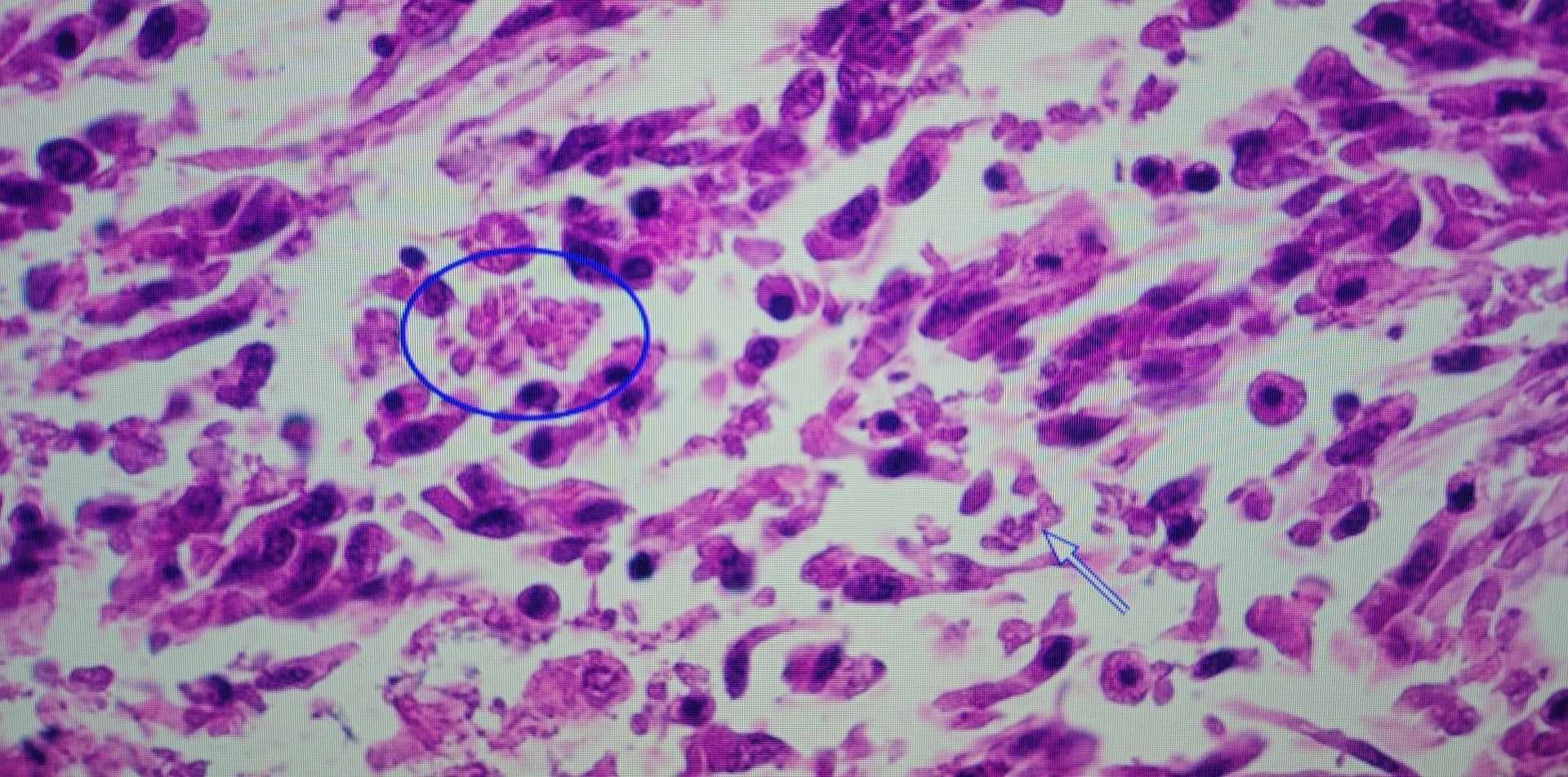
This is a good example that common problems are just that – common – but sometimes are difficult to identify without ancillary diagnostics. This has allowed specific treatment and management. This parasite may have been introduced by a fish consuming predator, such as a mink, raccoon or heron, either passing through or attracted to the fish in outdoor tanks. Correct identification allows for management and treatment without guessing and multiple withdrawal periods, particularly heading into winter.

